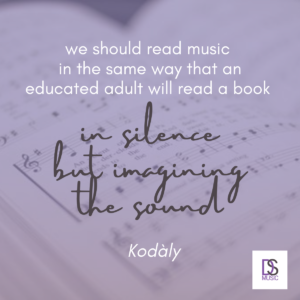Top Tips for Linking Music Literacy with Music Learning in the Instrumental Lesson
Comments Off on Top Tips for Linking Music Literacy with Music Learning in the Instrumental Lesson
My goal as a music teacher is to help students become musically literate in the same way as a language teacher helps their students become literate in the language they are being taught. But what does this mean?
The Australian Curriculum document states that “Literacy” (referring to the English language) is the ability “to interpret and use language confidently for learning and communicating…. And that it…. “encompasses the knowledge and skills students need to access, understand, analyse and evaluate information, make meaning, express thoughts and emotions, present ideas and opinions…”
So, to clarify, Music Literacy is the ability to hear/listen, speak/sing/play/perform, read and write with understanding! Or, to be able to see what you hear (as if it were written on a score) and to be able to hear what you see (hear the notes you see on a staff).
You can learn more about the language of music and why I use the tonic solfa (moveable do) system below!
Tools for teaching music literacy
- Ways to spell notes – tonic solfa, letter names, tonal/diatonic names, rhythm names
- Inner hearing/audiation
- Immersive listening
- Games/movement
- Handsigns
- Conducting
- Composing
- Memorising and so on
You can read more about the above across the DSMusic blog, just click and go!
Some strategies for linking music literacy meaningfully in your lessons
Across a variety of concept areas, you can incorporate practical (singing), visual (recognition), aural (listening) and written (notation) activities to improve student’s knowledge and understanding of scales, tonality, rhythm and harmony.
By taking examples from the repertoire students are already learning in your lessons, you can expand their musicianship capacities in a meaningful and relevant way, without creating too much extra work for yourself or including aural exercises as a disconnected ad-hoc end to a lesson.
Instead of trying to “find time to do aural and theory” in a 30min lesson, integrate it throughout! Here are some ideas below about how you can do this.
Make singing a regular feature of every lesson:
- sing tuning note before playing it
- inner hearing simple sight reading exercise then singing (preferably in solfa or letter names) before playing,
- analyse then sing scales repertoire is based on
- sing new repertoire (preferably in solfa or letter names) before playing (or select theme etc if more complex music),
- memorise by use of inner hearing (great for tuning, phrasing, articulation etc),
- rote learning or learning by ear
Other ideas include:
- Play simple phrases etc and ask student to sing then play back
- Encourage movement to emphasise the beat
- Use rhythm names to improve rhythmic understanding
There is a wealth of information, resources and support available from DSMusic – including the Music Language Online Course – Musicianship Module, the perfect way to meaningfully and sequentially scaffold learning and knowing in your lessons.
As Kodaly said, “we should read music in the same way that an educated adult will read a book: in silence, but imagining the sound.”
Happy musicianshipping! – Deb
If you would like more of this, check out the Linking Music Literacy with Music Learning in the Instrumental Lesson webinar pack (presented by DSMusic) in the VMTA Online Store.


Comments are closed